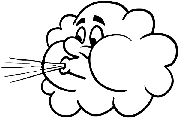The only way to measure mass is to compare it to another mass: This is the principle of balance. We measure here what is called relative masses. The use of a unit mass (and its multiples and submultiples) provides a measure of the other mass. This method gives the same result on the earth and ont the moon.
The mass is the only unit that is still defined by a single reference standard. The international reference kilogram is kept at the International Bureau of Weights and Measures in France.
Do not confuse mass and weight. The weight of a body is a strength, mainly due to the action exerted on it the gravitational field. And as the gravitational field is the same everywhere on earth one can easily deduct the weight from the mass or vice versa.
But we say still a mass of 10 kg corresponds to a weight of 98 Newton.





